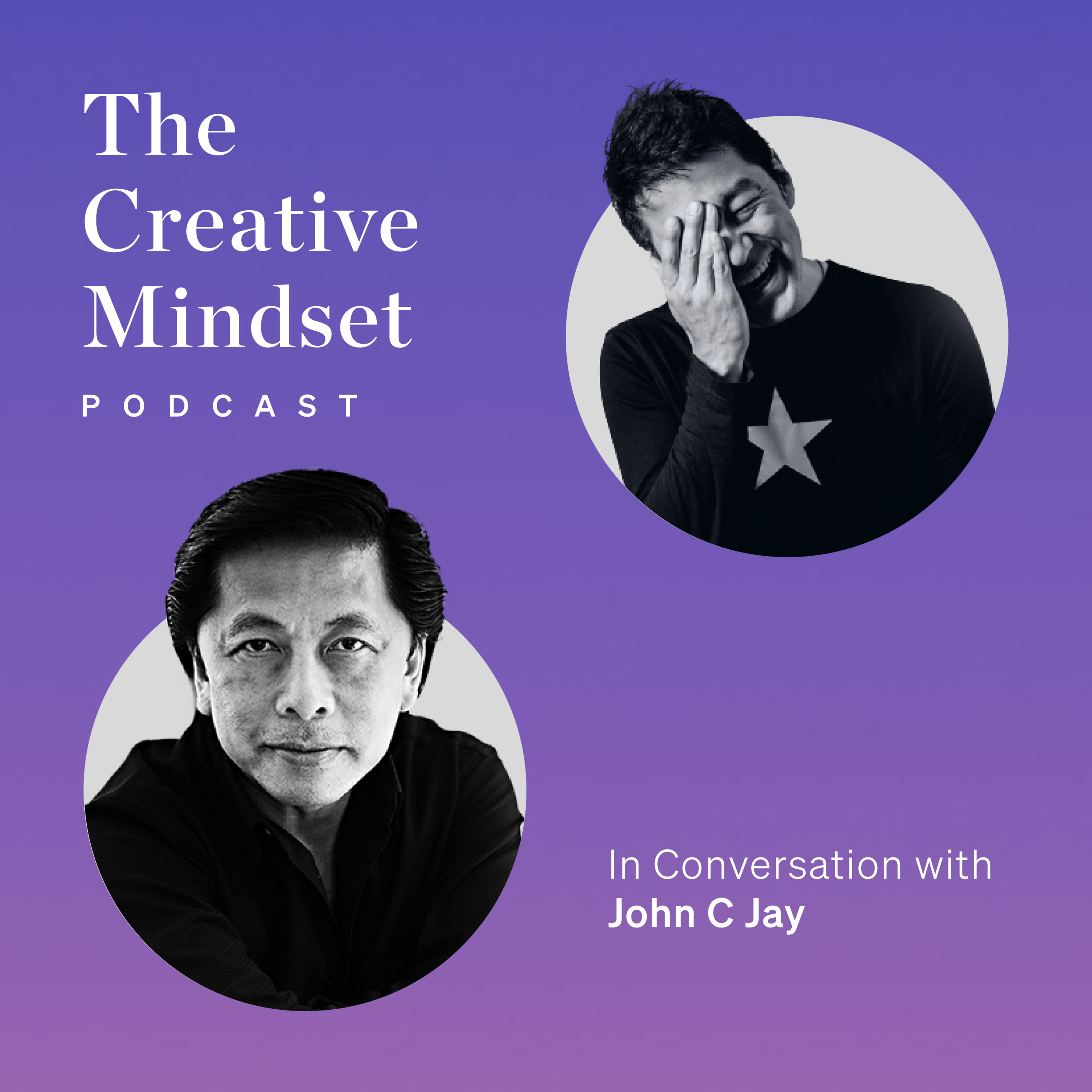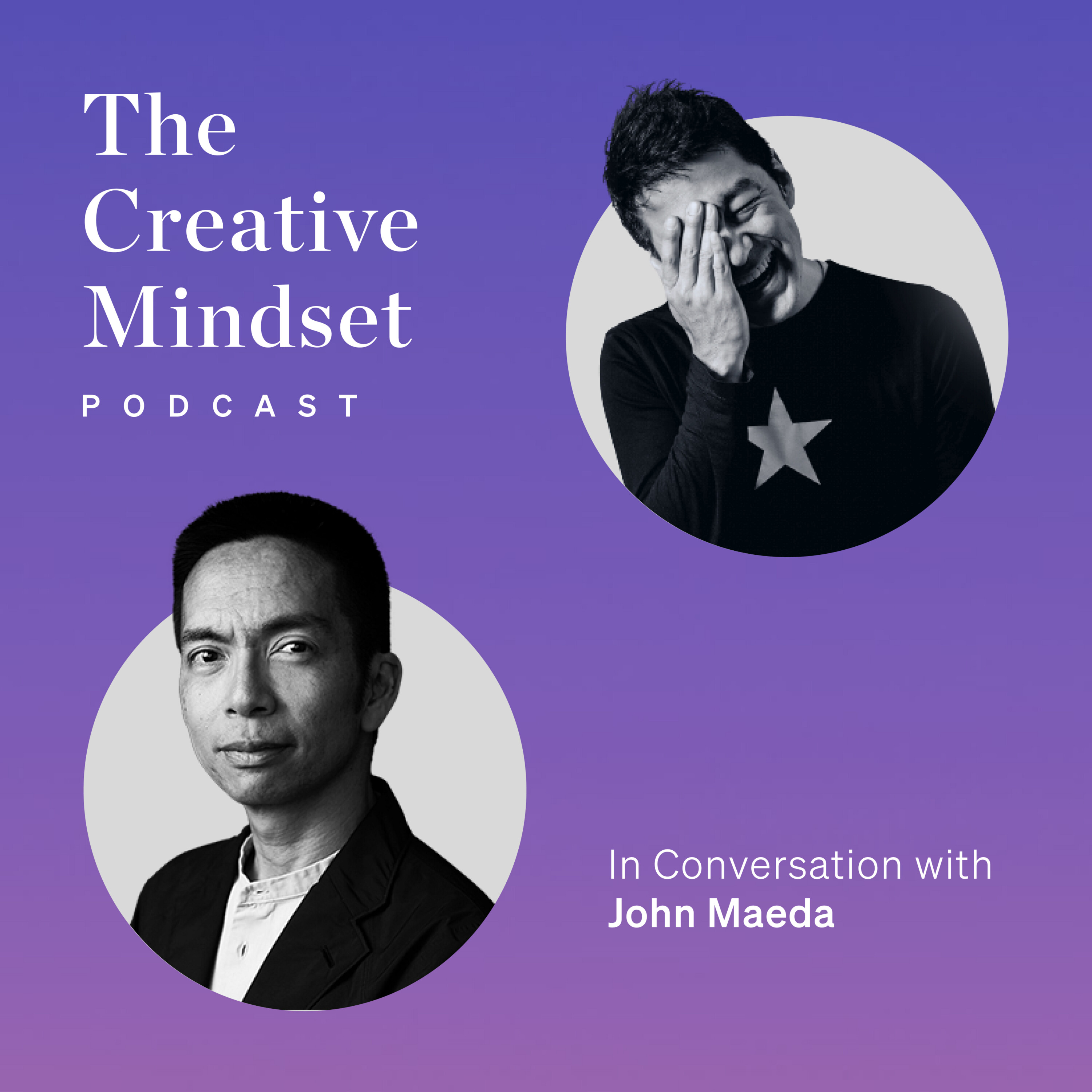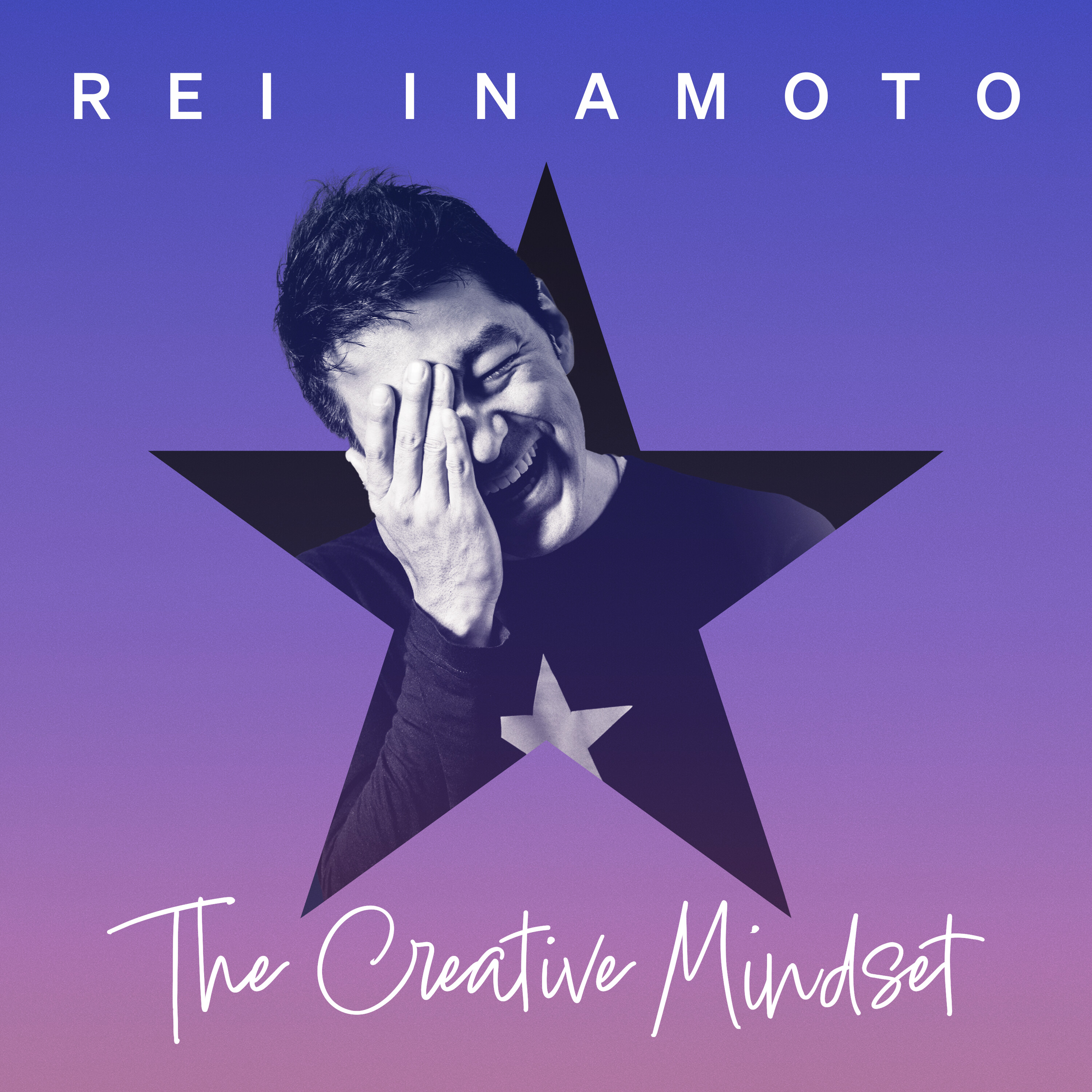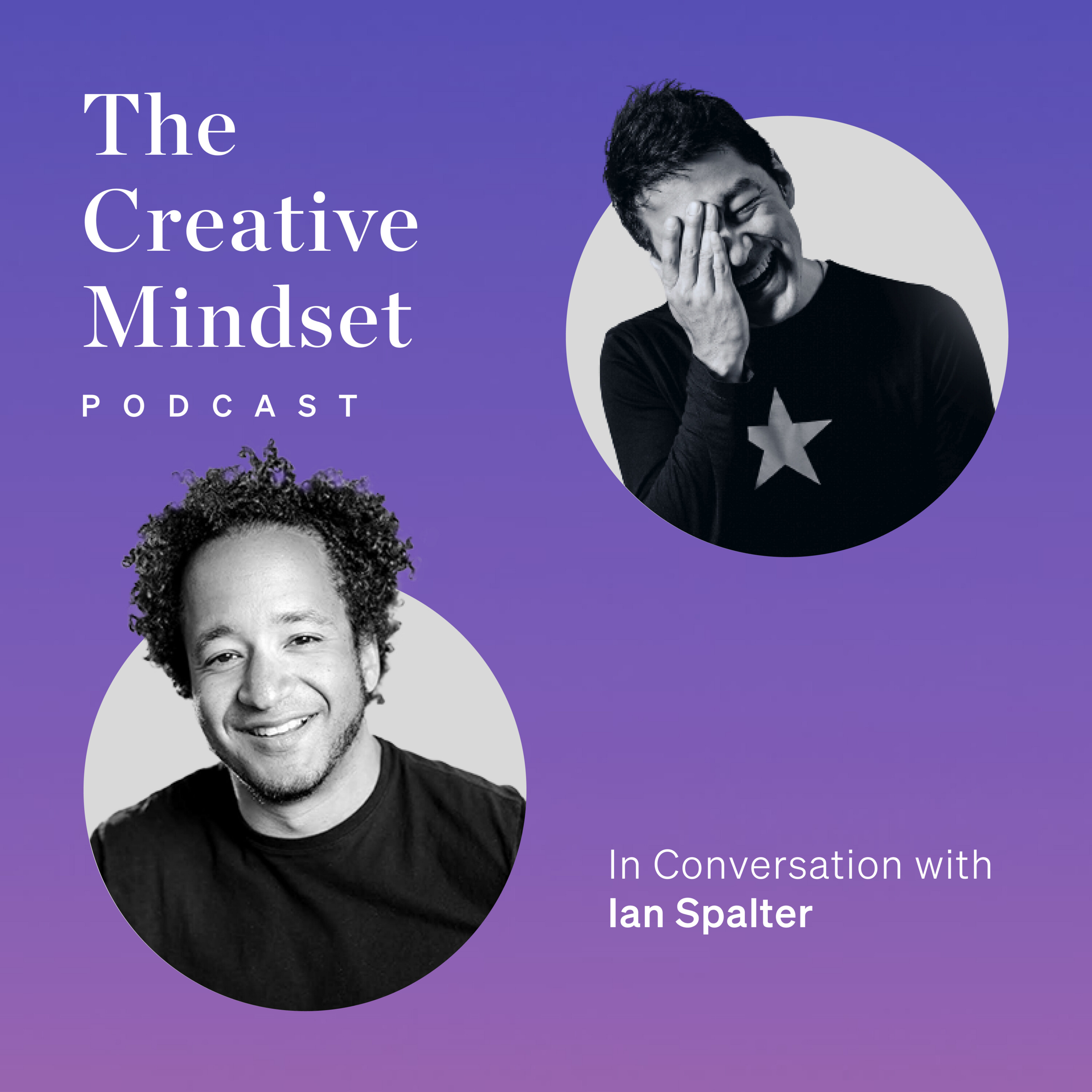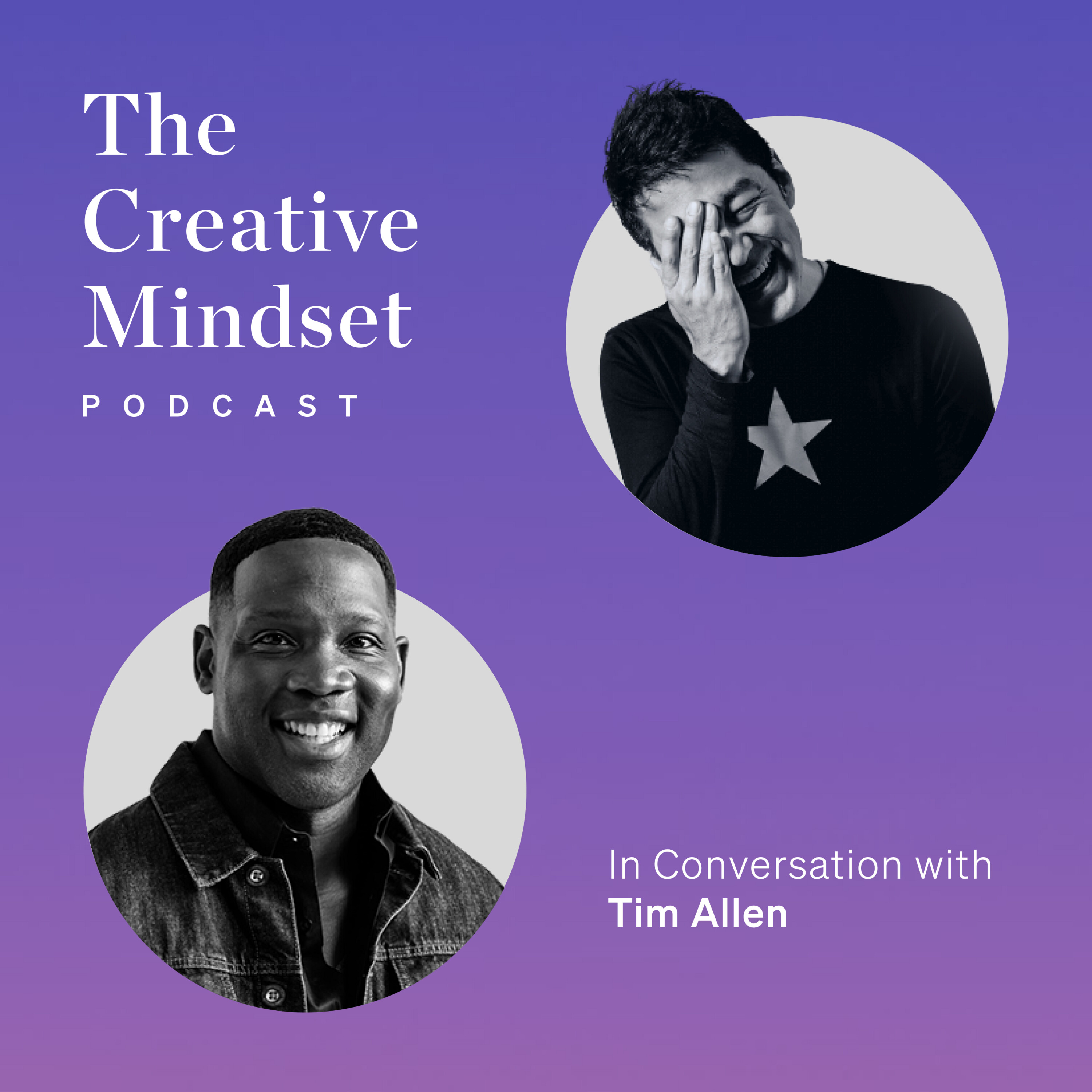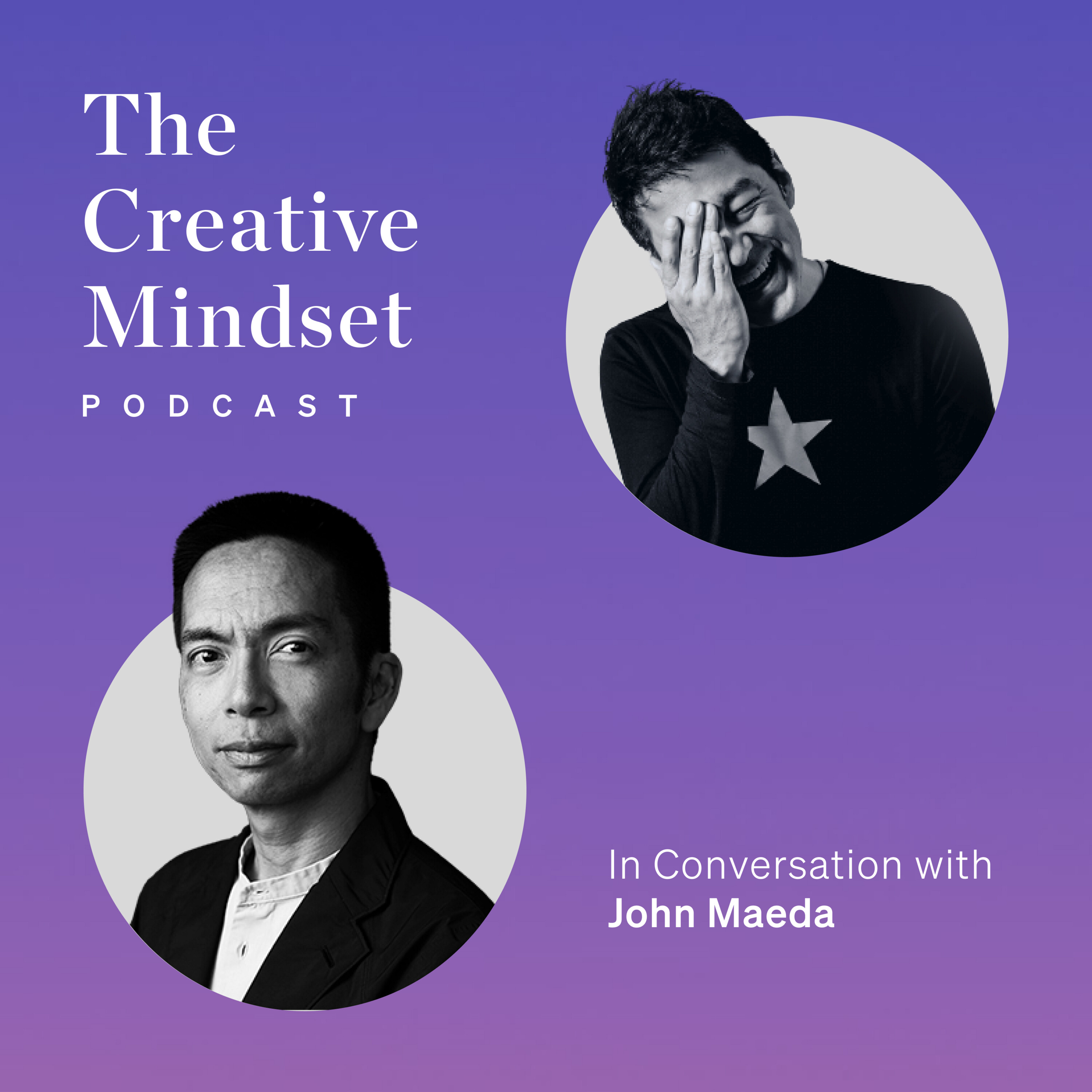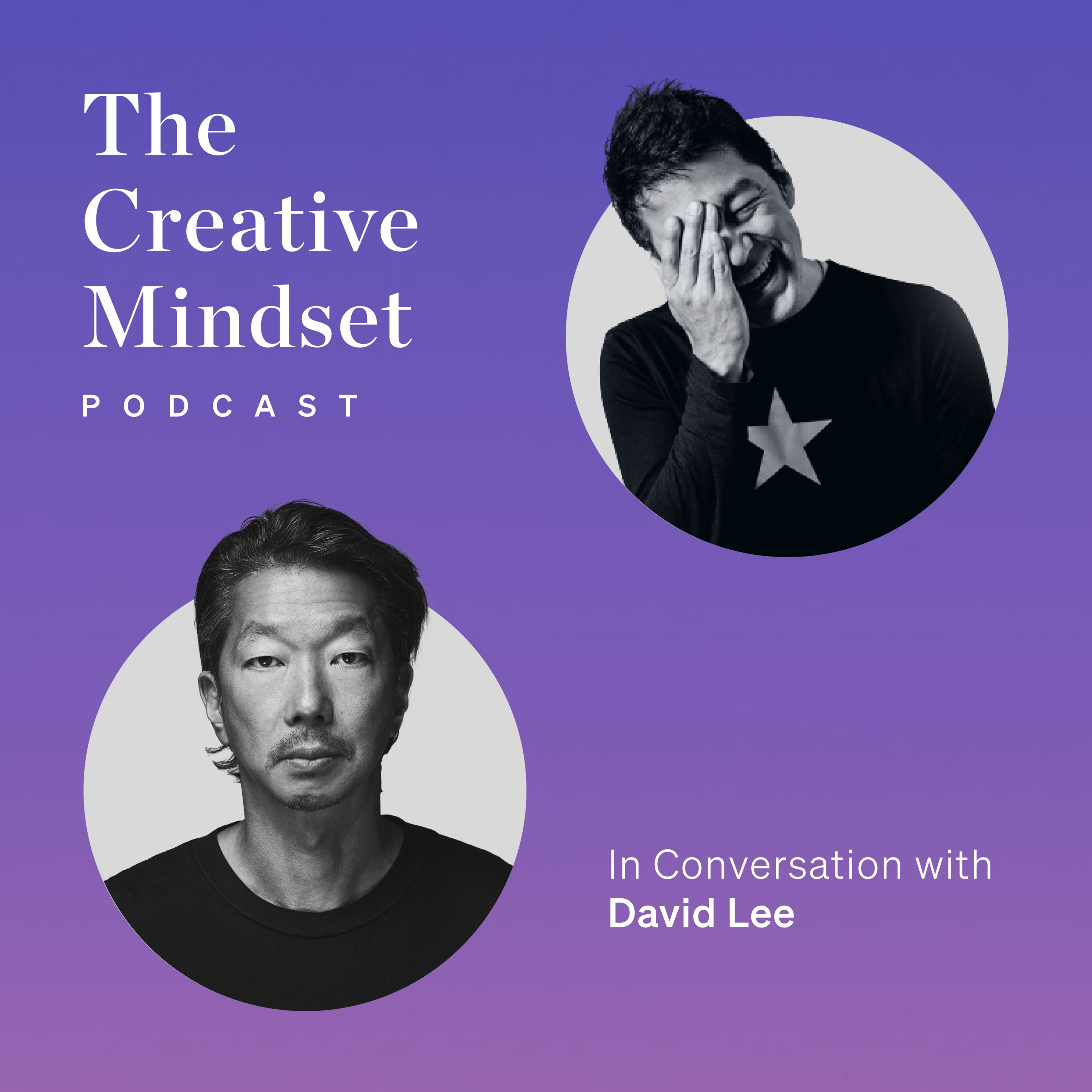This is Rainomoto's Podcast, The Creative Mindset.
Hi everyone, this is Rainomoto, the founding partner of I&CO,
a global innovation firm based in New York and Tokyo.
Welcome to The Creative Mindset, a podcast about the art of building a career through
conversations with the world's leading practitioners of creativity.
It's an intimate journey on how they got started, their turning points,
failures, and tips on work and life.
Today's conversation is with John Jay, the creative chairman of Uniqlo.
I've known John for over 15 years now.
The reason why I got to meet him wasn't because I reached out to him,
but because he reached out to me.
At the time, I was a creative director at an agency called AKQA based in New York,
and he was the executive creative director at Wieden & Kennedy,
one of the most respected creative agencies in the world.
To me, he was already an icon.
He was doing amazing work, particularly for Nike,
among many other clients that Wieden & Kennedy had.
And I really admired not only the work that he did,
but also as an Asian American creative leader, which is few and far in between.
He was almost like a godlike figure for a young creative like I was.
I'm appreciative of the fact that he took the time to reach out to me
and made that effort to come meet with me
when I was a much, much younger and less established creative.
And that's a lesson that he taught me without being explicit about teaching me.
This is part one of my conversation with John.
And in this episode, we go into his beginning as an immigrant from Asia to the United States,
how he came from a very humble beginning,
and eventually how he found creativity as his calling for his career and essentially for his life.
He goes into not only the specifics of how he made it
as a creative in New York and eventually around the world,
but also he talks about philosophy behind his creativity
and how he sees his work and life.
So let's get started.
Creativity, I think there's a certain belief, perhaps, that,
oh, it's a talent, you know, you have to be born with it.
Somewhat like athleticism, so to speak.
But the premise that I would like to pose to you,
and you can agree to this or disagree with it, is that it's not a talent.
It's something that you can learn, you can be taught, and you can nurture.
And I think it has to be both.
There has to be a spark of some sort of creativity,
but it is also incredibly hard work,
and it takes full-time attention, and you have to constantly relearn.
I didn't know anything about a creative career growing up.
I grew up in a very humble situation, son of immigrants, Chinese immigrants,
and I know this sounds like a sob story of sort, but it's the truth.
You know, I didn't live in a house until I was 14.
I didn't speak English until I was six or so.
My parents were not college-educated.
I didn't travel on an airplane until I was a sophomore in college.
So I come from a very humble background.
It makes me very appreciative of where I am today,
and having the opportunity to speak with you here today.
So in my background, I think I had a spark somewhere.
My parents will say, I have no idea where this talent
or this interest in creativity came from.
Certainly it wasn't in the family, it wasn't in the father and the mother,
but I always drew.
I always drew somehow.
But as you know, in classical Asian society and families,
being creative was kind of a hobby.
It was not necessarily, especially for immigrant parents,
not necessarily the direction you want your kids to go in terms of a career.
Um, especially because of your humble beginning
and your parents didn't really teach you artistic skills.
They didn't know what it was.
It wasn't in their vocabulary, and it wasn't even in your vocabulary.
They didn't say, go to the museum, see this exhibit.
They didn't say, go see this artist.
They didn't say, watch this movie.
They didn't know.
They're just immigrants working to make a living to put food on the table.
Knowing nothing, it makes me so curious.
And today, one of the driving forces for me is my curiosity.
And I have this great, great passion to learn and to meet interesting people
because I knew nothing and I knew no one.
So I wasn't a great art student in high school and so forth.
That was not my known path.
But I was always interested in creative things,
but I just didn't express it very well.
And it wasn't until I got to college that someone,
my best friend at that time, told me,
hey, there's this program called visual communications.
And it was a part of the industrial design program at Ohio State University.
I went to investigate with him.
He was in the program, and I went in the direction of graphic design.
So visual communication being graphic design.
This was a huge awakening for me.
All the teachers were Swiss, English, or German.
I've never been to Europe.
So that was my eye-opening experience.
The professors.
And it was unique because it was not a typical graphic design program
that you might see at SVA or other schools here in New York.
Very much based on Swiss methodology.
Methodology.
Very much upon critical thinking.
Very much on really doing research and understanding the problem,
articulating the problem, and being able to articulate the solution.
So it was not just simply having great skills and creating eye candy
and trendy graphics and so forth.
There was a lot of thinking behind it.
That was really helpful for me.
And one thing that you touched upon, critical thinking,
is such an important thing.
But also, like creativity, critical thinking is a little bit elusive.
How are they teaching you critical thinking?
Do you remember?
Well, I'll start with the very first project that we were given in visual communications.
The very first project was design a book cover.
We were not briefed very well.
We just designed a book cover.
And it was a kind of a test for us.
Speaking for myself, I didn't know where to start.
I didn't even know where the starting point was.
Why was that?
Because I didn't know what the problem was.
First you have to identify what's the subject matter,
what's the problem, and be very clear about that.
So design a book cover?
What kind of book cover?
What's the size of the book?
What does it have to say?
What's the image?
And so forth.
So the school, the teachers, the professors,
all talked a lot about problem solving.
Identifying the problem.
And what is the context of that problem?
That business problem exists because of market conditions.
It exists because of cultural conditions.
It exists because of social conditions.
So you have to understand that.
That was just an exposure to the world.
And as they were articulating, what is the problem?
How do you know about the problem?
What's the condition?
All of that was before we put pen to paper, or finger to keyboard now.
But in terms of finding the solution,
talk about the problem and understanding what the situation is first.
What is the question?
We in creativity are often forced, especially in Japan, I hate to say,
forced to the solution and to the execution first.
They want to know what color it is before they even know what it is.
The question is not what's the answer.
The question is what is the question?
What is the question?
And what are the boundaries and the parameters for me to think about the questions?
So the idea of a brief is so critical, but so difficult in Japan sometimes.
That discipline, which is part of critical thinking.
So what happened between your university career,
and then when you graduated,
can you talk about that process before getting to Leiden Kennedy?
Interesting thing when I was in school.
I was so curious.
I started looking at this magazine GQ,
and I started writing to the editor as a kid, as a student.
That was a great cover last month.
I thought it was much better this month, the cover than the cover you had last month.
I thought the editorial section was much stronger last month.
However, like, who am I to be writing these thoughts?
Why would they ever care?
I'm too naive.
I'm not that sophisticated.
I'm just writing my thoughts down and sending them every month.
And lo and behold, I get a letter from New York City,
and it has a GQ logo on it.
And the editor said,
John, you seem to be so interested in us.
Why don't you come to New York and join us?
How old were you?
I was probably, I don't know, maybe 19.
I don't know.
20.
Yeah, but I'm so stupid.
I'm so naive.
I'm just writing to everybody.
And that naive ignorance fueled my curiosity, you know?
And I would reach out to everyone.
I didn't know it was not cool to do that, you know?
So I moved to New York, taking any job I could.
Tiny, tiny publication on social change.
So my first career was in editorial.
And this is hugely important to me.
And I'm freelancing in the magazine world.
That was a full-time job.
And I'm freelancing as well,
and just soaking up everything I can about magazines.
So I go to New York, and I'm working at these really small magazines.
But because the magazines were business magazines, science magazines,
the covers had to be interesting.
So it really tested our conceptual skills,
taking very abstract ideas and having to make exciting visual covers.
The other thing, starting in magazines, my boss was the editor.
Therefore, words are important.
And to this day, and as you know, sometimes in the fashion world,
words aren't that important.
They almost try to stay away from words a little bit.
So words and working with editors became really important.
So storytelling, the arc of the story, understanding how to tell a story,
with the words, became a whole skill that I had to learn.
At the magazine, at the business magazine, there was a young man.
Jimmy, who does the advertising and the creativity for this store?
Because it's so famous already.
And so forth.
He goes, oh, you know, I can introduce you to my father
and to Gordon Cook, the marketing director.
So it's when I walked with him on that spring day,
that Sunday, I'll never forget,
as we got to the corner of 59th and Third,
I got the nerve to ask him about Bloomingdale's.
He set up an interview with his father.
And I remade my portfolio strictly for that meeting.
And this I've done throughout my career.
I made a portfolio for that opportunity
because I wanted my best shot.
If I walk in that door, I want to have the best possible chance
to engage in an interesting conversation with them.
So I remade my portfolio, asked favors from photographers,
used pictures that they had,
made a whole concept about fashion and light
and how light can change the beauty of women and fashion.
And that was the portfolio that I made to show to Bloomingdale's.
That got me the job.
That's a wonderful story.
I mean, I thought I knew, I mean, I know you.
I've known you for a long time now,
but not this much, you know, background, this much detail.
So I appreciate you sharing that with me
and with the rest of the audience.
So I go from these little magazines
about engineering and science,
and I go to Bloomingdale's in fashion and so forth.
Somehow, with no experience in fashion and marketing,
I go to Bloomingdale's.
So I was always able to make this crossover somehow,
jumping across, you know, the divide
and going from one discipline to another.
By the time you go to Bloomingdale's,
how old are you at this point?
Late in your 20s or?
Late 20s.
Late 20s?
Yeah, probably, yeah.
And then you make your way to Bloomingdale's, the fashion world.
What were some of the lessons that you took away?
Number one lesson is I got a lot to learn, right?
That's the other thing, a lot to learn.
I still say that today.
I didn't have any experience.
Now, did I have ideas?
Sure, but get in line.
Everybody's got ideas, just because you have ideas, you know.
So I made a lot of mistakes in the beginning.
I had to learn, but fortunately,
someone gave me the platform to learn.
Someone trusted me.
So overcoming the lack of experience and so forth, you know.
Probably, and having each time I changed categories of business,
I had to relearn.
So when I left Bloomingdale's, I went to Wieden & Kennedy.
So let's talk about the next jump.
You go from Bloomingdale's to Wieden & Kennedy.
I moved to Wieden & Kennedy without ever visiting Portland, Oregon.
I never went to the office.
I never interviewed.
And I think I made the smart decision.
I needed to get out of New York and really challenge myself.
The reason why I say I have to challenge myself
is that creatives often are the first to get onto a soapbox
and bark at their clients.
You need to take more chances.
Why are you so conservative?
You need to take risks.
You need to really reach for the stars.
You need to go out there and do something bold.
We bark very loud on our little soapbox,
but then we will look in the mirror.
We're as conservative as a little puppy.
We're scared to go out there and do something bold.
We're scared to death to take a chance.
I didn't want to be one of those people.
So from being this New Yorker now,
and going to Portland, Oregon,
that was a risk.
Stay in the fashion retail world.
Stay in New York.
I just renovated a big apartment.
I was very comfortable.
I could stay, you know, da-da-da-da.
I had a house in Connecticut and all that.
Stay, stay, stay.
Be comfortable, you know.
But I had this kind of angst that
I am luring myself into this comfort zone
that's not going to enhance my creative thinking,
and I'm not going to grow.
So I went from these little magazines
to the best, most iconic fashion retailer in the world.
I go from that to the best ad agency in the world.
So it's not like I'm just making these horizontal jumps,
but I'm jumping to really high categories,
really well-established categories
with very high standards.
I feel like you are always driving to find new things,
and maybe you have a point of view on that one,
but you have this drive to push yourself forward,
to elevate to the next level.
If you're a creative soul,
you have this thirst for new information
and meeting interesting people.
The great reward I have
is that I get to meet people like you
and the most interesting people in the world.
Now, all of that is fine,
but then you have to put it all together
and make something.
Make something.
I'm not a speaker.
I make things, and I want people to remember that.
As an executive up there in the ivory tower sometimes,
I still make things.
So I think, as I said, I'm just warming up.
Just warming up.
Everything up until this moment was dress rehearsal.
I'm not on Broadway yet.
I'm still off-Broadway.
I'm just trying to get ready for the big show.
What that show is, I'm not sure,
but I'm struggling to try to make it happen.
I have a long ways to go.
There's a lot of people I don't know in the world,
a lot of things I haven't achieved yet, and so forth.
I knew clearly what my disadvantages were
because I could see it all around me.
So I say, there's a lot of people smarter than me,
there's a lot of people better educated than me,
a lot of people richer than me, certainly,
and a lot of people more talented than me.
But I have one card up my sleeve.
This was part one of my conversation with John Jay,
the creative chairman of Uniqlo.
As I mentioned at the beginning of this episode,
I've known John for a long time,
but every time I talk to him, I learn something from him.
This conversation with John was, as usual,
educational and inspirational.
There were three takeaways from this.
Takeaway number one, there has to be some spark in you.
Takeaway number two, the question is not what is the answer,
the question is what is the question.
And takeaway number three, I have one card up my sleeve.
They can outwork me.
So the takeaway number one, there has to be some spark.
This was a quote that he brought up when I asked him,
is creativity nature or nurture?
Essentially, he said it is both.
When I ask this question to other people,
it's often the case that people tell me
that it is nurture more so than nature.
But John was explicit that, you know,
it is something that you can train,
but you have to have some spark in you.
John talks about how he loved drawing when he was a child,
and that was a spark that he had.
And he had this endless curiosity as a child
to pursue what he was interested in.
But that curiosity, I would say he never lost it.
Even in his late years, more recently,
he's a very established creative leader in the industry.
But one thing that I've always noticed about John
is that he has this endless curiosity.
Curiosity, in a way, is ageless.
It doesn't matter how old you are,
whether you are a five-year-old or 55-year-old
or even 85-year-old, you can have that curiosity
and that becomes your spark to pursue creativity,
as you're calling.
Key takeaway number two,
the question is not what is the answer,
the question is what is the question.
He works for a Japanese global company,
and in Japan, it's often the case that employees
tend to want to know what the answer is
in order to pursue that thing.
A lot of employees, and I guess that could be
a similar case in the US as well,
where people want to be given a clear direction
and in some cases, clear specific instruction
in terms of what you need to do.
But what John talks about here is that,
you know what, you shouldn't be asking
for what is the answer from the get-go,
but it is your job to pursue and find
what the answer is.
And in order to get a good answer,
you need to be asking the right,
if not good question,
so that you can get to the right
or at least good answer.
So the question is not what is the answer,
but the question is what is the question.
Ask good questions.
And finally, key takeaway number three,
and this was one of the last things that he said
in my conversation with John,
but we decided to put this quote
into the first part of this conversation
because we felt that this was such a powerful statement.
And he said,
I have one caught up my sleeve,
they can't outwork me.
When I heard this,
when I heard John say this,
it gave me chills up my spine.
Again, like I said, you know,
he's been in this industry for many, many decades,
and he's more successful than most people that I know.
But to this day, he works like,
he doesn't work like crazy,
but he works really smartly.
And he knows that even if other people
are much more talented than he might be,
and other people might have more resources than he does,
but one thing that he says with conviction and confidence
is that they can't outwork me.
And that's his secret weapon.
The kind of conviction that he had when he said that,
the kind of confidence that he had when he said this,
I was looking at him in his eyes,
and he had the spark that I mentioned earlier,
the spark in his eyes,
and that gave me chills.
So to summarize,
key takeaway number one,
there has to be some spark within you.
Number two, the question is not what is the answer,
but the question is what is the question.
Key takeaway number three,
I have one card up my sleeve,
they can't outwork me.
In the second episode of my conversation with John Jay,
he goes into the specifics of what he does at Uniqlo
and the kind of work that he has done at Uniqlo.
He also talks about the fact that he volunteered
to move to Japan in the 90s
when Wyden Kennedy was setting up
their first outpost in Asia.
And then finally, he talks about
what kind of impact his humble beginning had
on his creative career.
So stay tuned.
I am your host, Rei Inamoto,
and this is The Creative Mindset.
See you next time.
